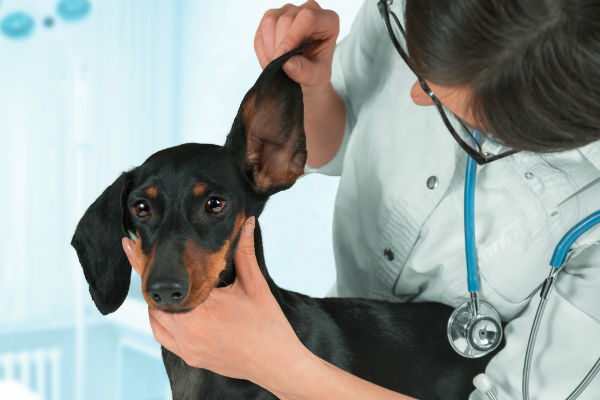It is estimated that about 5 to 10 percent of dogs in the United States suffer from deafness, either in one ear (unilateral) or both ears (bilateral). But most dogs with hearing issues cope well with their disability, are very trainable, and can even go on to compete in dog sports. AKC GoodDog! Helpline trainer Erin Rakosky tells us more about canine deafness and living with a deaf dog.
Causes: Deafness can be either inherited or acquired. Hereditary deafness can be either cochleosaccular or neuroepithelial in origin. Cochleosaccular is the most common cause of deafness and is associated with coat color patterns. It is usually seen in dogs with the piebald color genes or merle color gene. It can cause deafness in either one or both ears and is seen more in association with blue eyes and a white coat. This type of deafness can be first seen between 1 to 3 weeks of age.
Neuroepithelial deafness is not associated with coat patterns. It usually impacts both ears and is typically seen around the same age.

Acquired deafness can be caused by numerous factors. Some medications can be toxic to the ears. Generally, the deafness caused by these drugs is permanent, but some animals may regain hearing over time. Many older animals develop deafness. It typically starts with the loss of ability to hear mid-level to high-level frequencies and eventually leads to the inability to hear any frequency.
How to Tell if Your Dog Has a Hearing Problem: Typically dogs that are bilaterally deaf from a young age are easy to recognize. They may not listen when called, be hard to wake when sleeping, or not acknowledge when you arrive home.
Unilaterally deaf dogs, or dogs that become deaf later in life, may be more difficult to diagnose. A dog who is deaf in only one ear may have difficulty locating where a sound comes from and will typically orient themselves towards the good ear.
BAER Testing: Many breeders of dogs that have hereditary deafness will choose to BAER test their breeding animals and puppies. If you suspect your dog is deaf, contacting your veterinarian to find out the nearest facility that offers BAER testing is ideal. BAER testing is the gold standard in deafness diagnosis. BAER stands for Brainstem Auditory Evoked Response; the test detects electrical activity in the cochlea and auditory pathways in the brain. It is performed by a veterinarian, who will place small electrodes on the dog’s head and then send a stimulus click through foam earpieces. Each ear is tested individually.

Living with a Deaf Dog: Deaf dogs can live normal lives but need to have a special dedicated owner. Deaf dogs are not suitable for families with young children as they can be startled easily. They should never be allowed to be off leash in an unenclosed area, and their owners must be willing to learn a new language.
With the proper knowledge, positive training and patience, owning a deaf dog can be very rewarding. Learn more about training a deaf dog, here.


